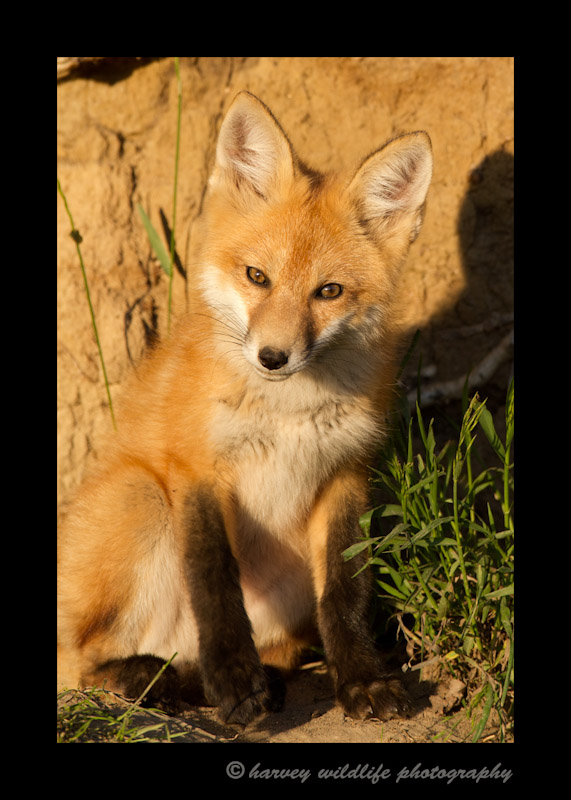
The red fox has an elongated body and relatively short limbs. Red foxes living in Middle Asia show physical traits intermediate to the northern and southern forms. Their limbs are also longer, and their ears larger. These foxes display transitional features between northern red foxes and smaller fox species their skulls possess more primitive, neotenous traits than the northern forms, and are much smaller the maximum sizes attained by southern foxes are invariably less than the average sizes of northern foxes. Southern grey desert foxes include the Asian subspecies V. v. griffithi, V. v. pusilla and V. v. flavescens.Northern foxes are large and brightly coloured.Red fox subspecies are divided into two categories: Also, introduced eastern red foxes in California may be interbreeding with local V. v. necator populations. European foxes were introduced to portions of the USA in the 18th century, thus crossbreeding with local North American populations. Substantial gene pool mixing between different subspecies is known British red foxes have crossbred extensively with foxes imported from Germany, France, Belgium, Sardinia, and possibly Siberia and Scandinavia. In 2010, another possible distinct subspecies was discovered in Sacramento Valley through mitochondrial haplotype studies. Īs of 2005, 45 subspecies are recognised. This has led to the theory that the red fox was hunted by primitive humans as both a source of food and pelts. The earliest fossil remains of the modern species date back to the mid- Pleistocene in association with the refuse of early human settlements. The ancestral species was likely smaller than the current one, as the earliest red fox fossils are smaller than modern populations. The earliest fossil specimens of V. vulpes were uncovered in Barany, Hungary dating from between 3.4 and 1.8 million years ago. The species is Eurasian in origin, and may have evolved from either Vulpes alopecoides or the related Chinese V. chikushanensis, both of which lived during the Middle Villafranchian. It is, however, not as adapted for a purely carnivorous diet as the Tibetan fox.

The red fox is considered a more specialised form of Vulpes than the Afghan, corsac and Bengal foxes in the direction of size and adaptation to carnivory the skull displays much fewer neotenous traits than in other species, and its facial area is more developed. (The arctic fox has a small native population in northern Scandinavia, while the corsac fox’s range extends into European Russia.) It is the only fox native to Western Europe, and so is simply called ’the fox’ in British English. Because of its widespread distribution and large population, the red fox is one of the most important furbearing animals harvested for the fur trade. The species has a long history of association with humans, having been extensively hunted as a pest and furbearer for many centuries, as well as being represented in human folklore and mythology. Although the red fox tends to kill smaller predators, including other fox species, it is vulnerable to attack from larger predators, such as wolves, coyotes, golden jackals and medium- and large-sized felines. Fruit and vegetable matter is also eaten sometimes. The species primarily feeds on small rodents, though it may also target rabbits, game birds, reptiles, invertebrates and young ungulates. The young of the mated pair remain with their parents to assist in caring for new kits. Red foxes are usually together in pairs or small groups consisting of families, such as a mated pair and their young, or a male with several females having kinship ties. Forty-five subspecies are currently recognised, which are divided into two categories: the large northern foxes, and the small, basal southern foxes of Asia and the Middle East.

Despite its name, the species often produces individuals with other colourings, including albinos and melanists. Apart from its large size, the red fox is distinguished from other fox species by its ability to adapt quickly to new environments. Among the true foxes, the red fox represents a more progressive form in the direction of carnivory. The red fox originated from smaller-sized ancestors from Eurasia during the Middle Villafranchian period, and colonised North America shortly after the Wisconsin glaciation. Due to its presence in Australia, it is included among the list of the “world’s 100 worst invasive species”. Its range has increased alongside human expansion, having been introduced to Australia, where it is considered harmful to native mammals and bird populations. It is listed as Least Concern by the IUCN. The red fox ( Vulpes vulpes) is the largest of the true foxes and the most abundant member of the Carnivora, being present across the entire Northern Hemisphere from the Arctic Circle to North Africa, Central America and Asia.


 0 kommentar(er)
0 kommentar(er)
